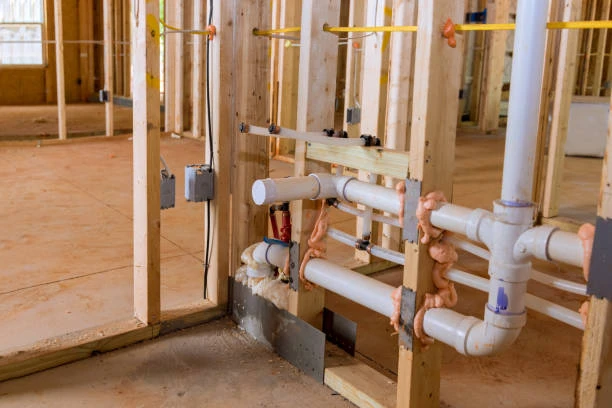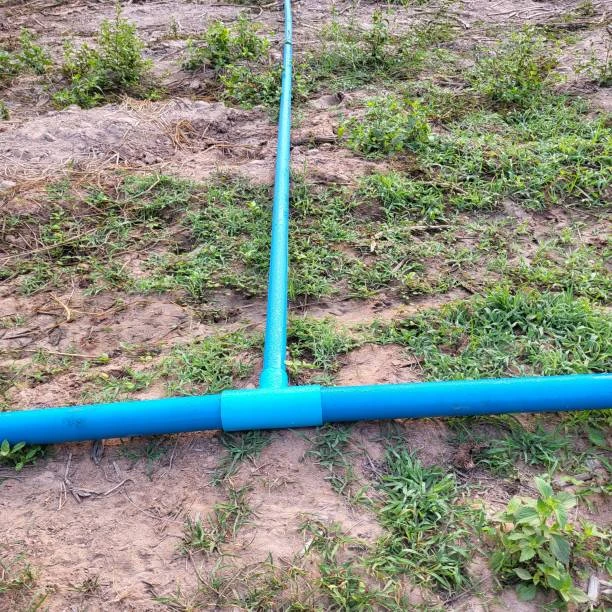Subtitle: Infrastructure Bill Fuels Major Growth for Pipe Projects Across the Nation
The U.S. government’s recent infrastructure bill has become a game-changer for the construction and manufacturing industries, especially when it comes to pipe projects. With billions of dollars allocated for revitalizing aging infrastructure, improving water systems, and ensuring environmental sustainability, the demand for pipes is set to surge. This article explores how the infrastructure bill is driving investment in pipe projects, the impact on the industry, and the long-term benefits for both businesses and communities.
What is the Infrastructure Bill?
In November 2021, President Biden signed into law a historic $1.2 trillion infrastructure bill aimed at revitalizing the country’s infrastructure. Among its key provisions, the bill allocates significant funds to modernize roads, bridges, transit systems, and water infrastructure. This includes substantial investments in pipe projects that will overhaul aging water, sewer, and stormwater systems across the U.S.
The bill earmarks $55 billion specifically for water infrastructure, much of which is focused on replacing old pipes, improving water quality, and ensuring better access to clean drinking water. The funding is expected to benefit communities nationwide, especially those in underserved areas, and create thousands of jobs in the process.
The Surge in Pipe Projects
The infrastructure bill represents a major opportunity for the pipe industry. A significant portion of the allocated funds will go toward replacing outdated and deteriorating pipes. Many of the country’s water and sewage systems were built decades ago and are showing signs of wear and tear. These aging systems often contain lead pipes, which pose health risks, or corroded pipes that leak precious resources and increase maintenance costs.
Here’s a breakdown of the areas that will see substantial investments in pipe projects:
- Water Pipe Replacement Projects
A major focus of the infrastructure bill is replacing lead and other hazardous pipes. The U.S. Environmental Protection Agency (EPA) has long identified lead pipes as a critical health issue, particularly in older urban areas. The infrastructure bill provides funding for municipalities to replace these unsafe pipes with safer alternatives, such as those made from PVC, PE, or other corrosion-resistant materials. - Sewer System Upgrades
In addition to water pipes, the bill also prioritizes upgrades to the nation’s sewer systems. Many cities have combined sewer systems, which can become overwhelmed during heavy rains, leading to wastewater backups and contamination. By investing in modernized pipes and treatment facilities, the government aims to reduce the risk of flooding and contamination, improving public health and environmental sustainability. - Stormwater Management Infrastructure
Stormwater runoff is a growing concern in urban areas, where impermeable surfaces like asphalt and concrete prevent water from being absorbed into the ground. To manage this, the bill includes funding for stormwater systems, including the construction of larger pipes and retention basins to reduce flooding and protect water quality. These improvements are essential in mitigating the impacts of climate change and extreme weather events. - Broadband and Utility Pipelines
The bill also allocates funds for expanding broadband infrastructure, some of which involves the installation of fiber optic cables and utility pipelines. This creates an indirect boost for pipe manufacturers, who will supply materials for these projects. As rural areas gain access to high-speed internet, demand for various types of pipes used in telecommunications infrastructure will increase.
The Impact on the Pipe Industry
The influx of funding for pipe projects will have a ripple effect throughout the pipe manufacturing industry, affecting everything from raw materials to installation and maintenance. Pipe manufacturers, contractors, and construction firms are gearing up for a surge in demand, which could last for years to come.
1. Increased Demand for Pipes
The infrastructure bill’s investment in water and sewer system upgrades directly translates into a surge in demand for pipes. Municipalities and contractors will require vast quantities of pipes to complete the replacement projects. This spike in demand is expected to lead to higher production levels for pipe manufacturers and could drive competition among suppliers to meet project deadlines.
2. Technological Innovation and Improved Materials
With large-scale investments in infrastructure comes the need for the latest pipe technologies and materials. Manufacturers are likely to invest in innovations that make pipes more durable, cost-effective, and environmentally friendly. For example, advancements in PVC, high-density polyethylene (HDPE), and composite pipes could result in more efficient water and wastewater systems. These materials are also more resistant to corrosion, reducing long-term maintenance costs.
3. Job Creation and Economic Growth
The focus on pipe projects will create a significant number of jobs in construction, manufacturing, and engineering. Industry reports indicate that the demand for millions of workers will rise to replace aging infrastructure, install new pipes, and maintain these systems. This boost in employment will not only benefit pipe manufacturers but also support the local economies of cities and towns undertaking these large-scale projects.
4. Environmental Benefits
One of the primary goals of the infrastructure bill is to enhance sustainability. Upgrading to modern pipe systems can significantly reduce water loss, decrease energy consumption, and prevent contamination. For example, modernizing outdated stormwater systems can help reduce the amount of pollution entering local rivers and oceans. Additionally, the installation of more durable pipes can minimize future waste, contributing to the overall goal of environmental stewardship.
5. Improved Infrastructure Resilience
The new pipe projects are expected to enhance the resilience of infrastructure across the U.S. By replacing aging pipes and reinforcing water and sewer systems, municipalities will better equip themselves to handle extreme weather events, population growth, and other future challenges. Stronger infrastructure will reduce the risk of service disruptions, ensuring a more reliable supply of clean water and effective sewage systems.

Challenges in Meeting the Demand for Pipe Projects
Despite the promising outlook, there are several challenges that could impact the speed and efficiency of these pipe projects:
- Supply Chain Disruptions
The construction and manufacturing industries are still grappling with global supply chain disruptions, including shortages of raw materials and labor. These challenges could delay pipe production and project timelines. Manufacturers will need to work closely with suppliers to ensure a steady supply of materials and manage logistical challenges. - Skilled Labor Shortage
As the demand for pipe projects increases, so too will the need for skilled labor. Installing, repairing, and maintaining modern pipe systems requires a highly trained workforce. The shortage of skilled workers in construction and trades could delay the progress of pipe projects and increase labor costs. - Environmental Concerns
While upgrading to modern pipes can provide environmental benefits, the environmental impact of manufacturing and transporting pipes is still a concern. To address this, manufacturers may need to adopt greener production methods and reduce their carbon footprint to align with broader sustainability goals. - Coordination Between Stakeholders
Large infrastructure projects often involve multiple stakeholders, including local governments, construction firms, suppliers, and contractors. Coordinating these efforts and managing project timelines can be complex, especially when different stakeholders have different priorities and constraints. Effective project management will be crucial to ensure that pipe projects are completed on time and within budget.
The Future of Pipe Projects
The future of pipe projects in the U.S. looks promising, with the infrastructure bill serving as a catalyst for widespread improvements. As government funding pours into the sector, municipalities across the country will invest in updating water, sewage, and stormwater systems, creating long-term demand for pipes.
For pipe manufacturers, contractors, and construction firms, this represents a tremendous opportunity to expand their operations and develop new products. The shift toward more sustainable and efficient infrastructure also paves the way for new innovations in materials and technology. Over time, these investments will lead to a more resilient, sustainable, and efficient infrastructure system, benefiting both current and future generations.
Conclusion
The infrastructure bill is delivering much-needed funds to pipe projects that will transform the nation’s water and sewage systems. These investments not only address critical public health and environmental issues but also stimulate economic growth and job creation. As pipe manufacturers ramp up production to meet the increased demand, the industry is poised for growth. By embracing new technologies and materials, pipe manufacturers can help shape the future of U.S. infrastructure and contribute to a more sustainable and resilient economy.
Frequently Asked Questions (FAQs)
- How much funding does the infrastructure bill allocate for pipe projects?
The infrastructure bill allocates approximately $55 billion specifically for water infrastructure, which includes funding for replacing lead pipes, upgrading sewage systems, and improving stormwater management. - What types of pipes are being used in these infrastructure projects?
People commonly use modern pipes made from materials such as PVC, PE (polyethylene), and HDPE (high-density polyethylene) for water. - How will the infrastructure bill benefit local communities?
Local communities will benefit from safer, more reliable water and sewer systems, improved public health, job creation. - What challenges could delay the completion of pipe projects?
Supply chain disruptions, a shortage of skilled labor, environmental concerns. - What role do pipe manufacturers play in the success of the infrastructure bill?
Pipe manufacturers are crucial in meeting the increased demand for pipes, providing the necessary materials.


















